Sri-Lanka
The Second Page
Day 7: 23rd August 2018:
In the morning we visited the Kandy tooth relic temple, also bare-footed whenever anywhere near it, and no shorts to be worn since all legs must be covered.
We were then taken for a tour of the tea plantations and the tea factory. Throughout Sri Lanka, the tea is referred to as Ceylon tea. We finished the day getting some exercise, by walking all the way around Gregory Lake, seeing Mynah birds, some very large fish and some very malnourished horses.
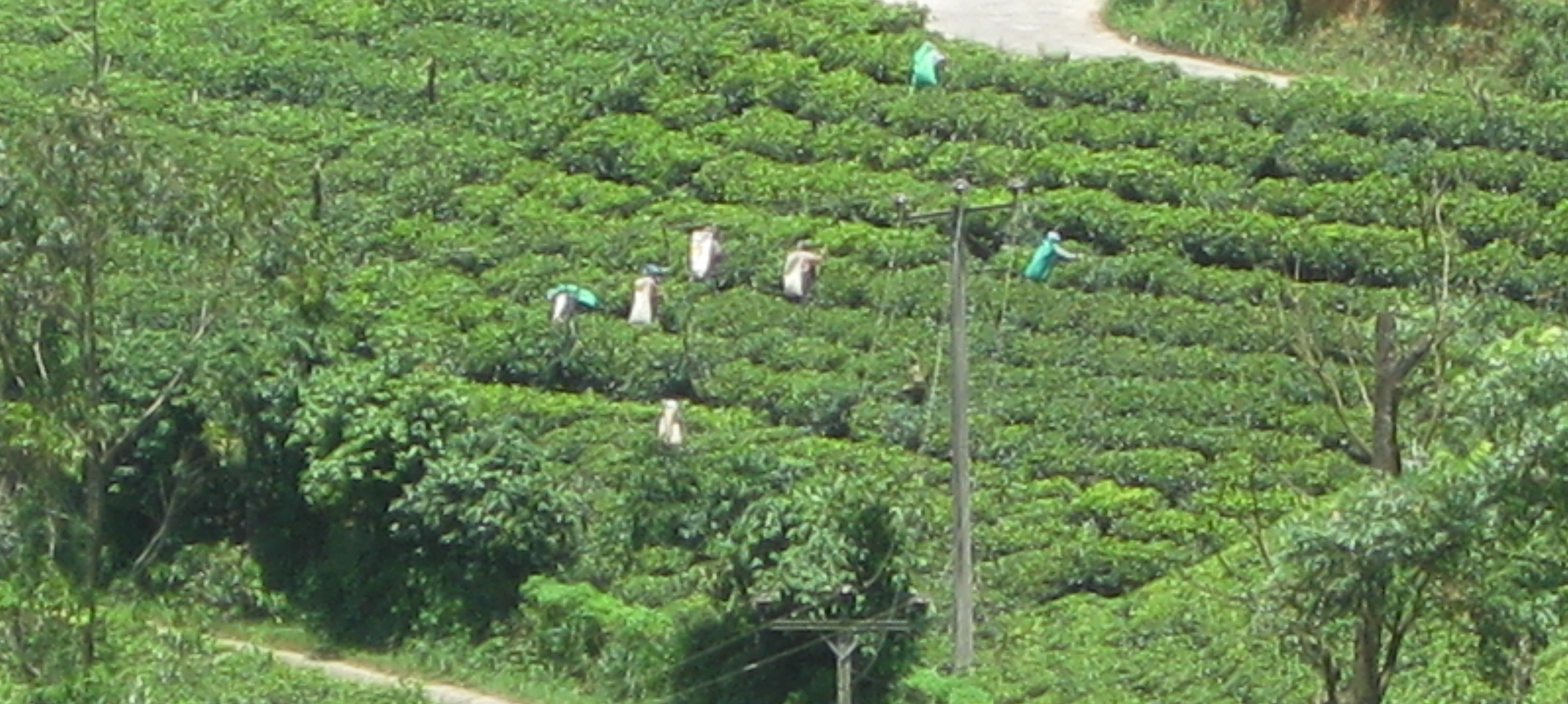
Tea leaves being picked
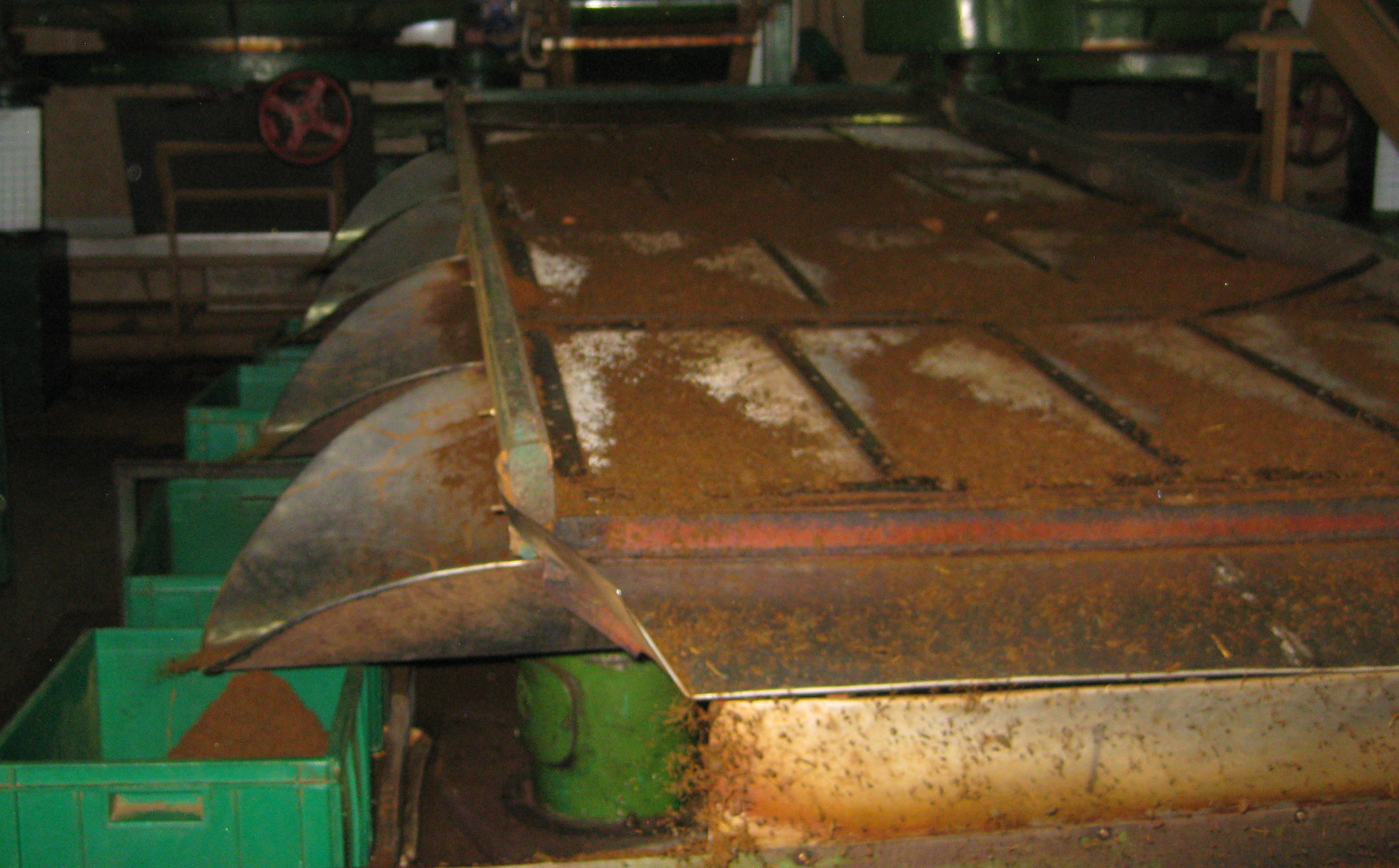
Inside the tea factory
Day 8: 24th August 2018:
We visited and went inside a Hindu temple, complete with dancing statues with upper arms each having two lower arms and hands, an advantage when picking tea, and then saw some large waterfalls on the way to an overnight tented stop. The tent had a proper bed and an ensuite bathroom with all of the usual facilities
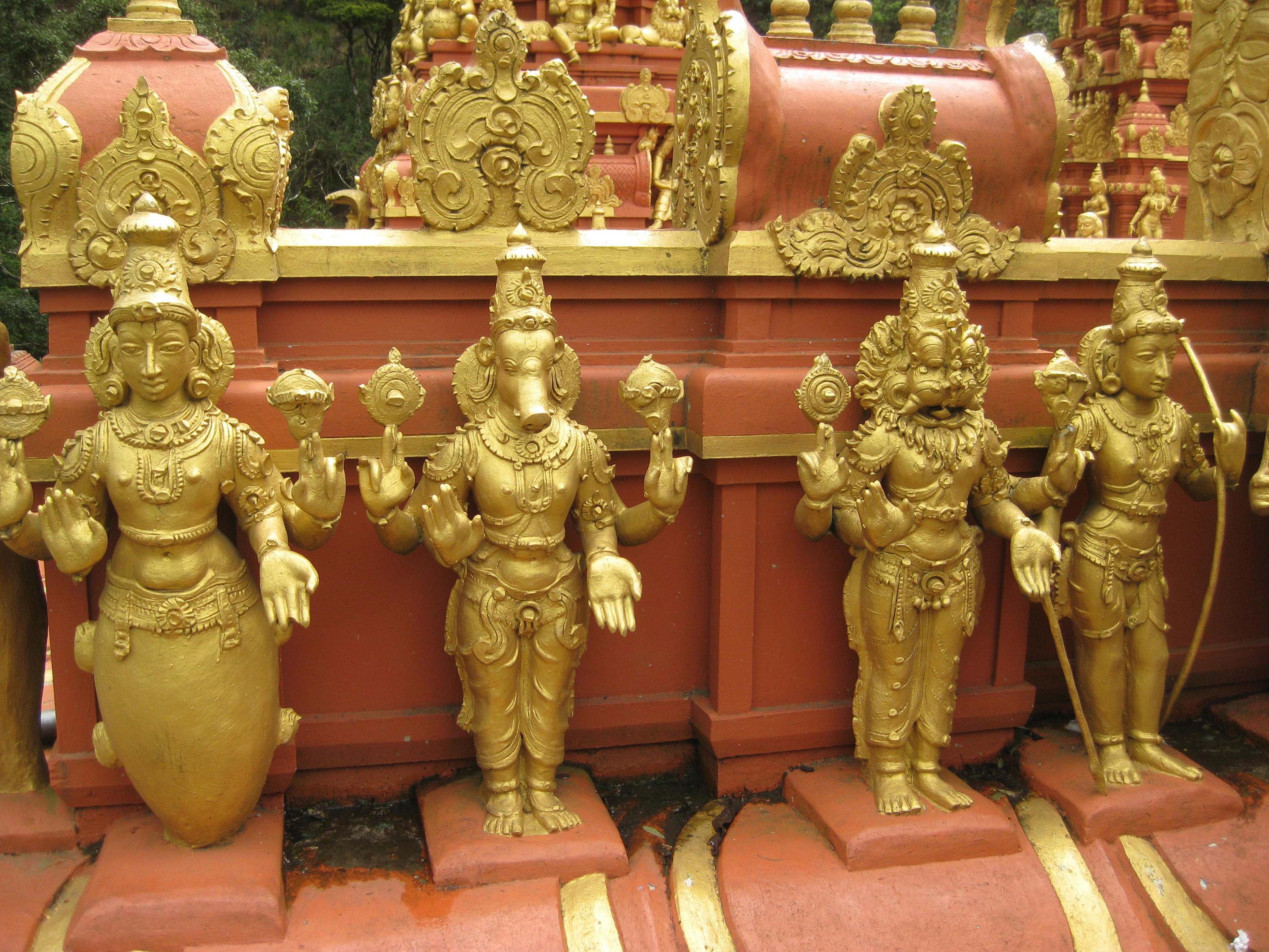
Hindu sculpture
Day 9: 25th August 2018:
A very early start with a packed breakfast took us to the Udawalawa wildlife park where we went with our own guide on a jeep safari. We saw buffalos, elephants, spotted deer, egrets, a gang of 7 dozing crocodiles, kingfishers, parakeets, chameleons and peacocks, before going on to visit an elephant transit home where orphaned elephants are cared for. We ended the day at another tented camp, at Yala.

Spotted deer
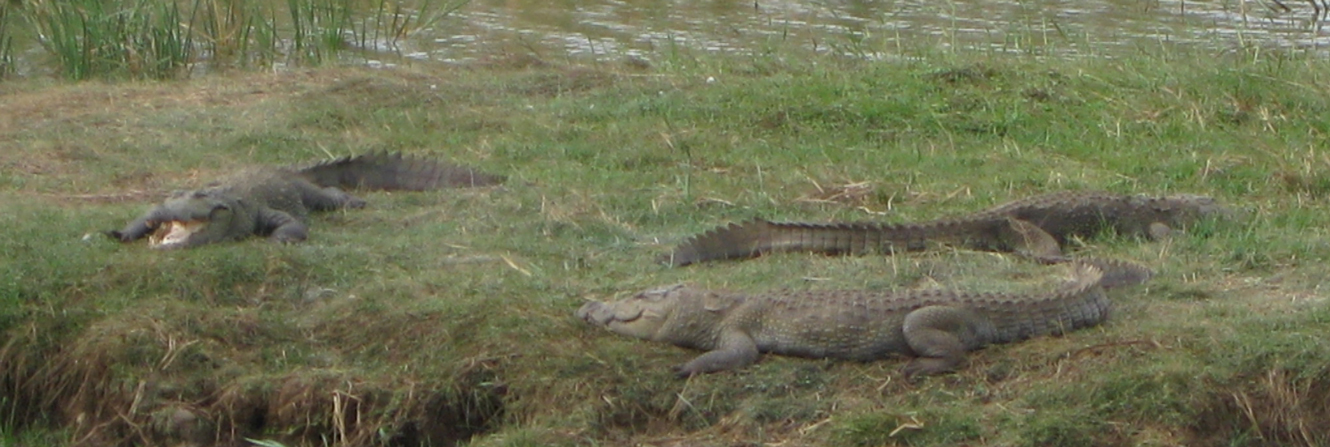
Dozing crocodiles
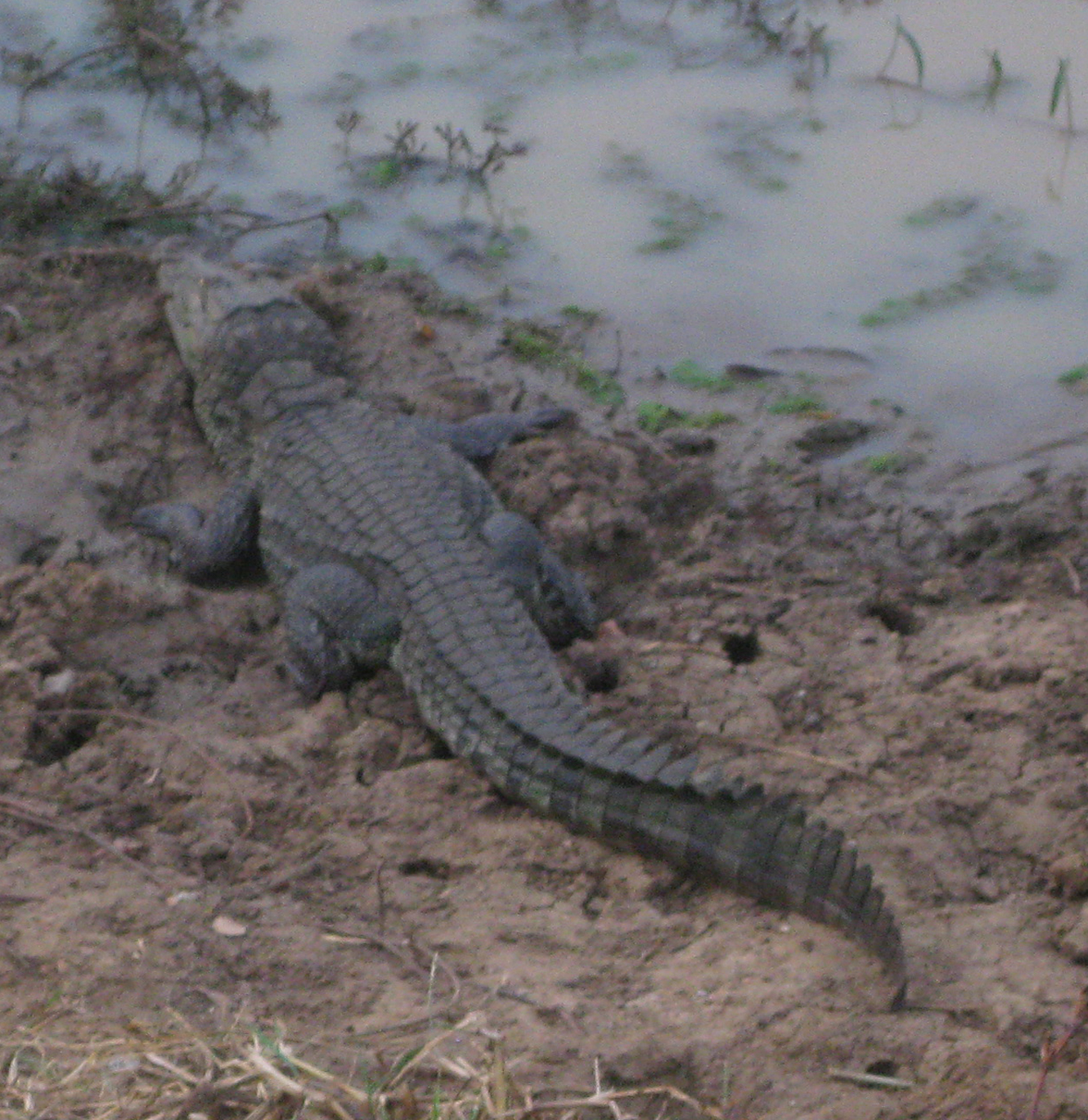
One closer up
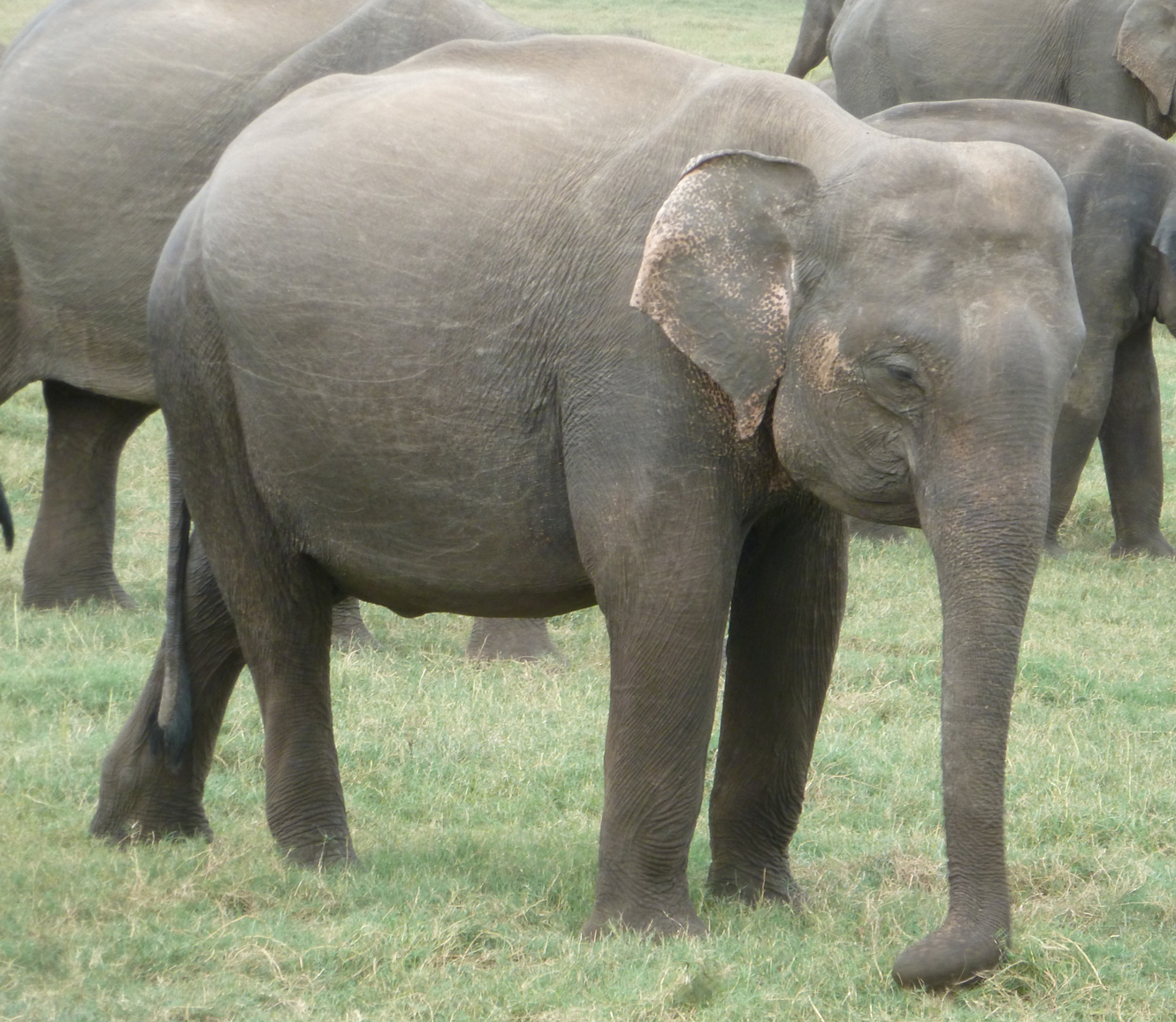
Teenage elephant
Day 10: 26th August 2018:
Another very early start with packed breakfast took us to another jeep safari, at Yala, encountering wild boar with young on our approach drive, and grey langar monkeys on arrival. We saw 3 leopards on our left in the bush, moving in our direction, so we kept pace just behind them. Eventually two of them crossed the road just in front of us giving us an excellent view of them. We spent that night in a hotel at Kalutara.
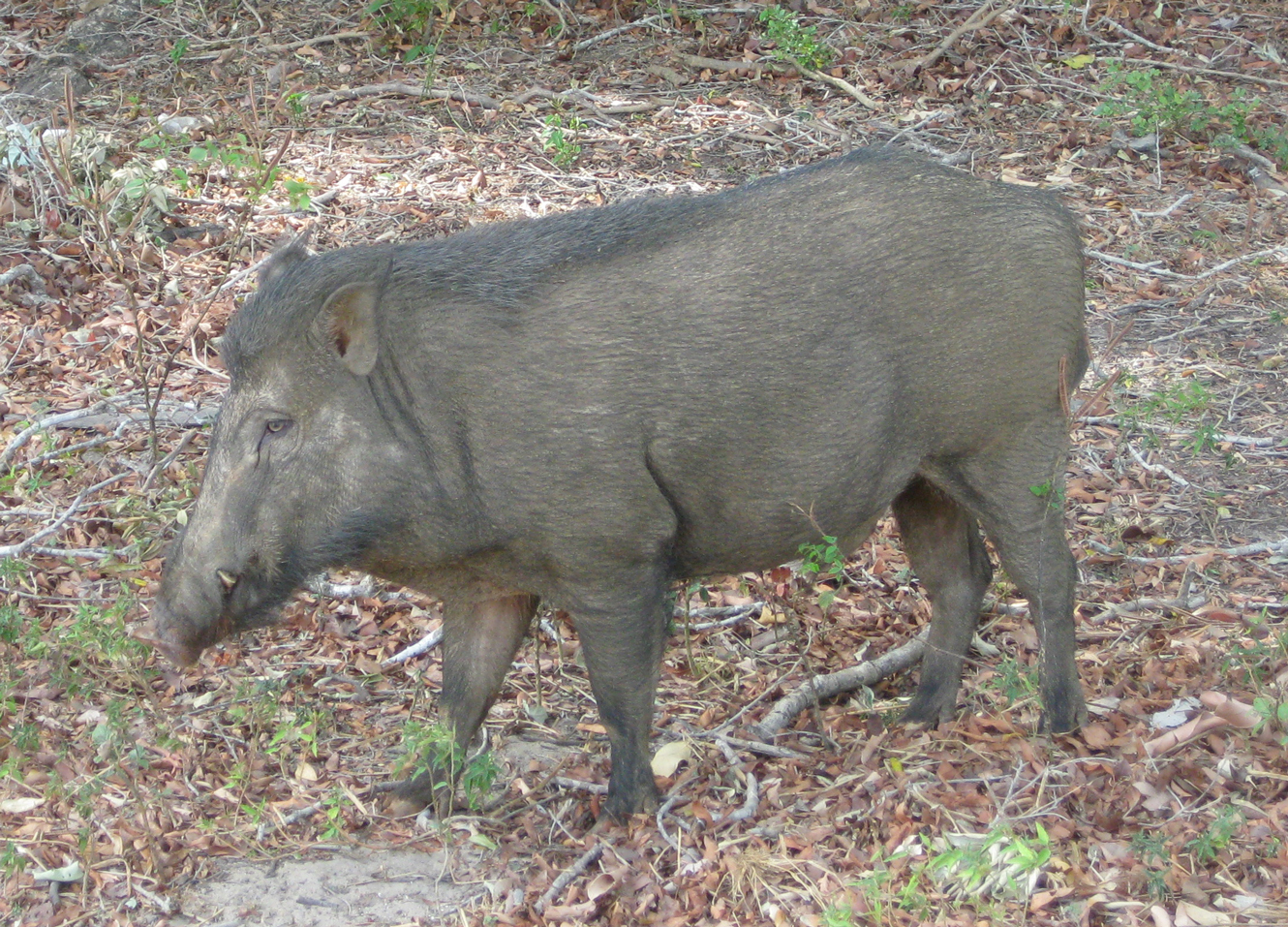
Wild Boar
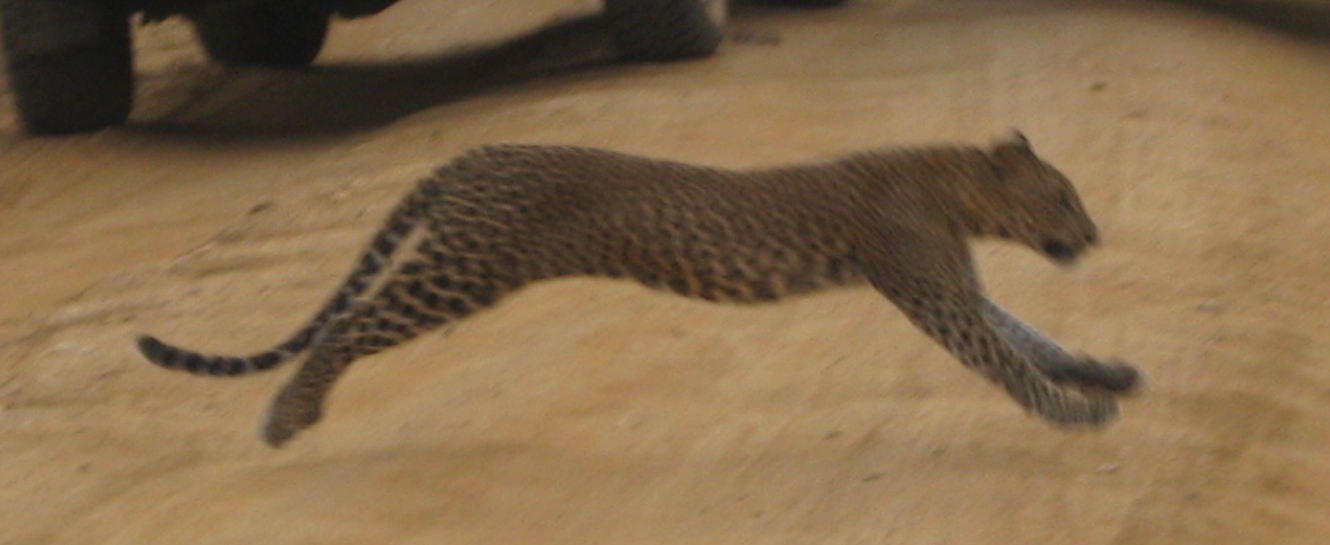
Leopard
Day 11: 27th August 2018:
An 0600 start with breakfast boxes, took us to the Sinharajaya Rain Forest, explored in 3½ hours on foot. We saw a tiny green snake, a very large snail, spiders, pitcher plants, a mimosa fern which quickly curled up if touched, a jumping lizard, a very large millipede, a large green snake, a very long narrow trail of ants and a purple headed monkey. Once back at our hotel we went for a walk along the beach and saw a chipmunk near the hotel swimming pool.
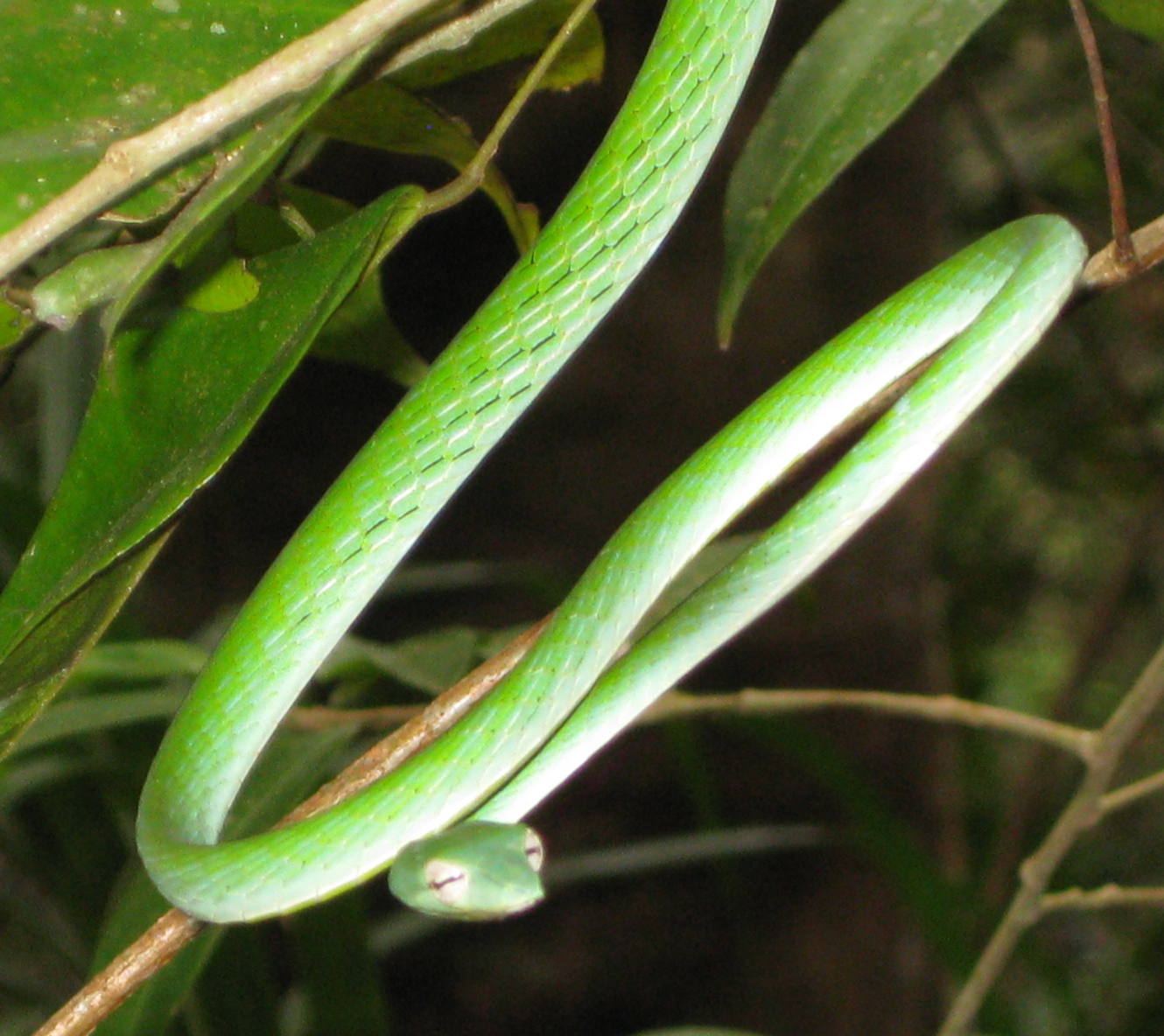
Small snake
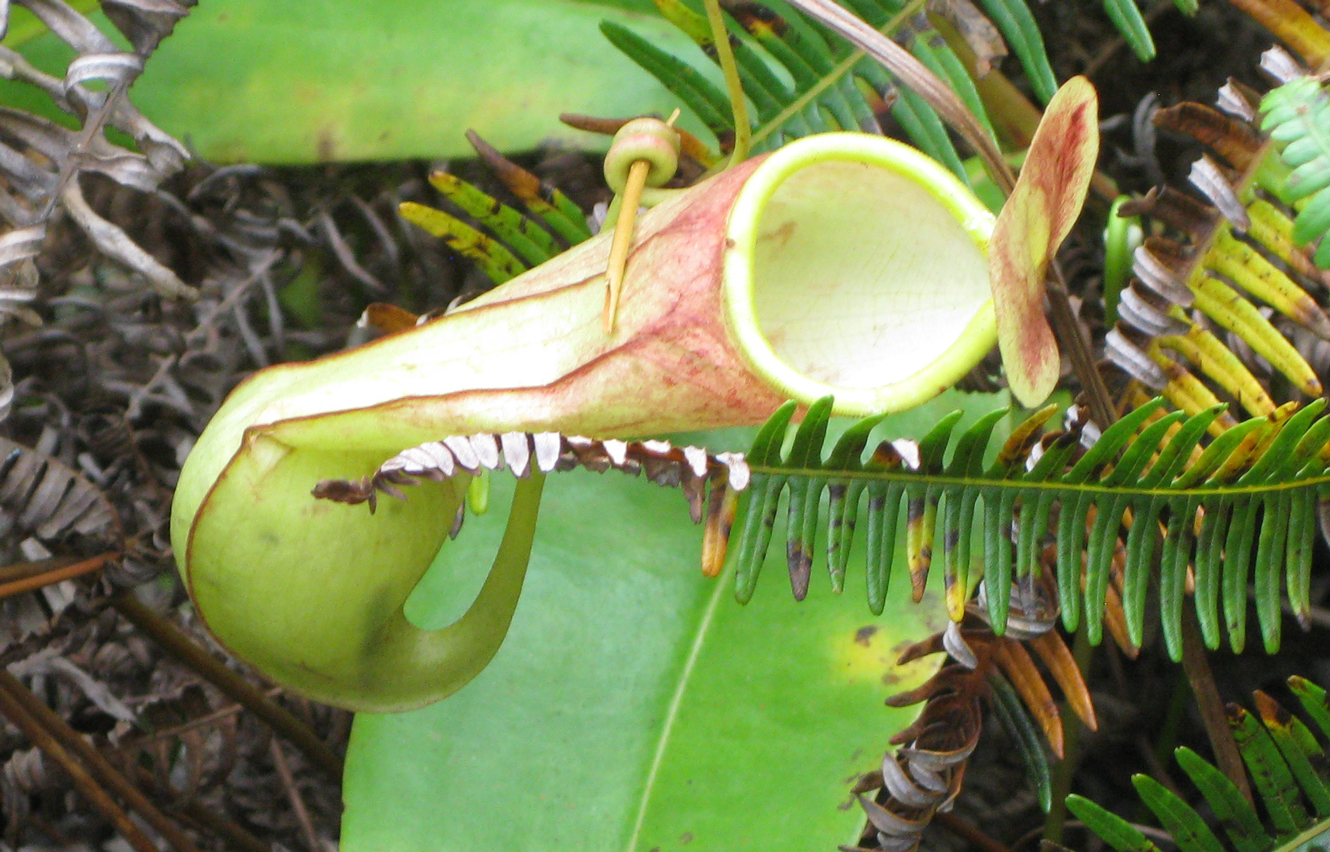
Pitcher Plant

Iguana
Day 12: 28th August 2018:
We started with a visit to Kandervichara Buddhist Temple, before heading for a river trip. On a boat ride searching for wild life we saw a large water monitor, a baby crocodile and a large one, 3 Kingfishers, a large iguana, some very large fruit bats and a bird similar to a stork. The river was surrounded with thick mangroves. We went on to see a turtle hatchery.
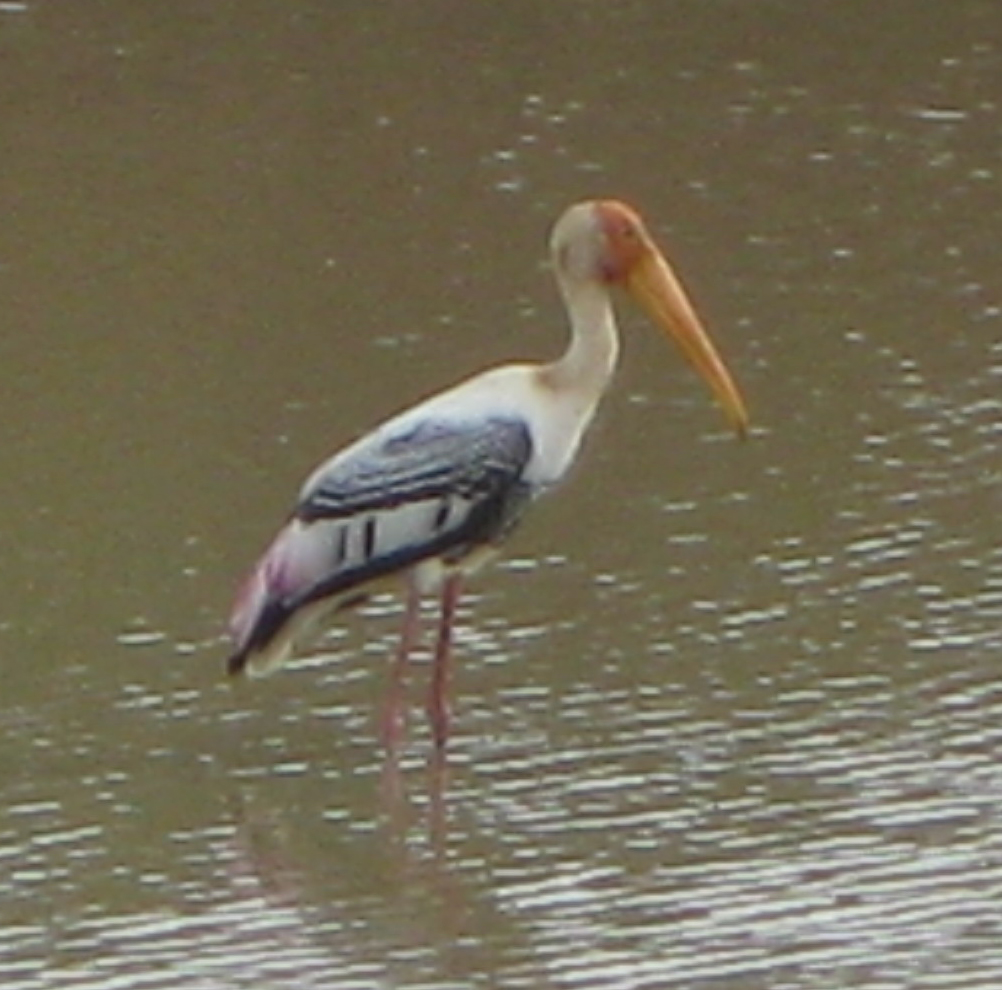
Stork
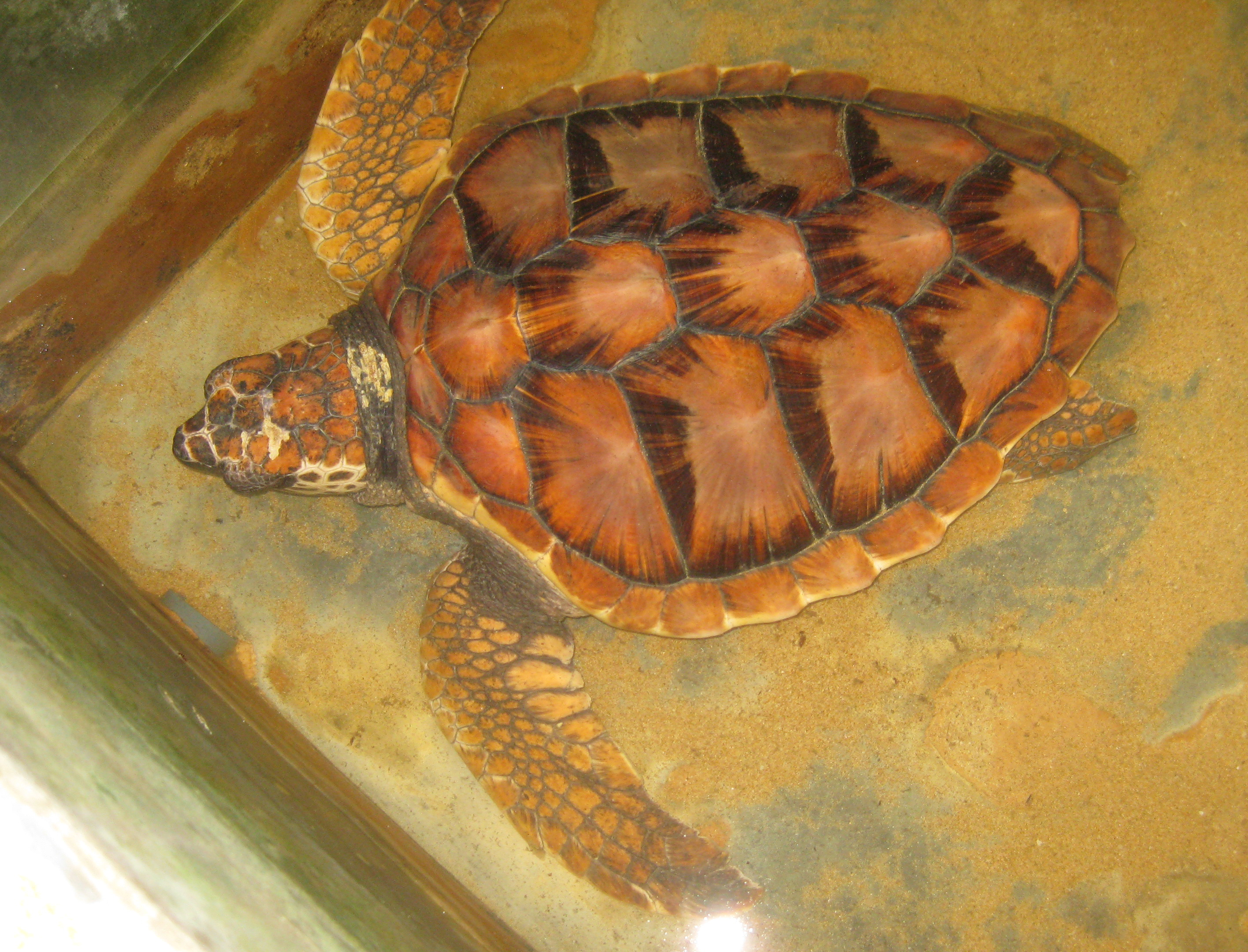
In the turtle hatchery
We then went on to see a moonstone mine, with a small deep shaft. A man with a (probably pre-prepared) sieve of mined sand, after showing us the sieving, immediately found pieces of white and blue moonstone in his sieve. The surrounding area was filled with shops selling crystal stones of all sorts, but we resisted the usual hard sell.
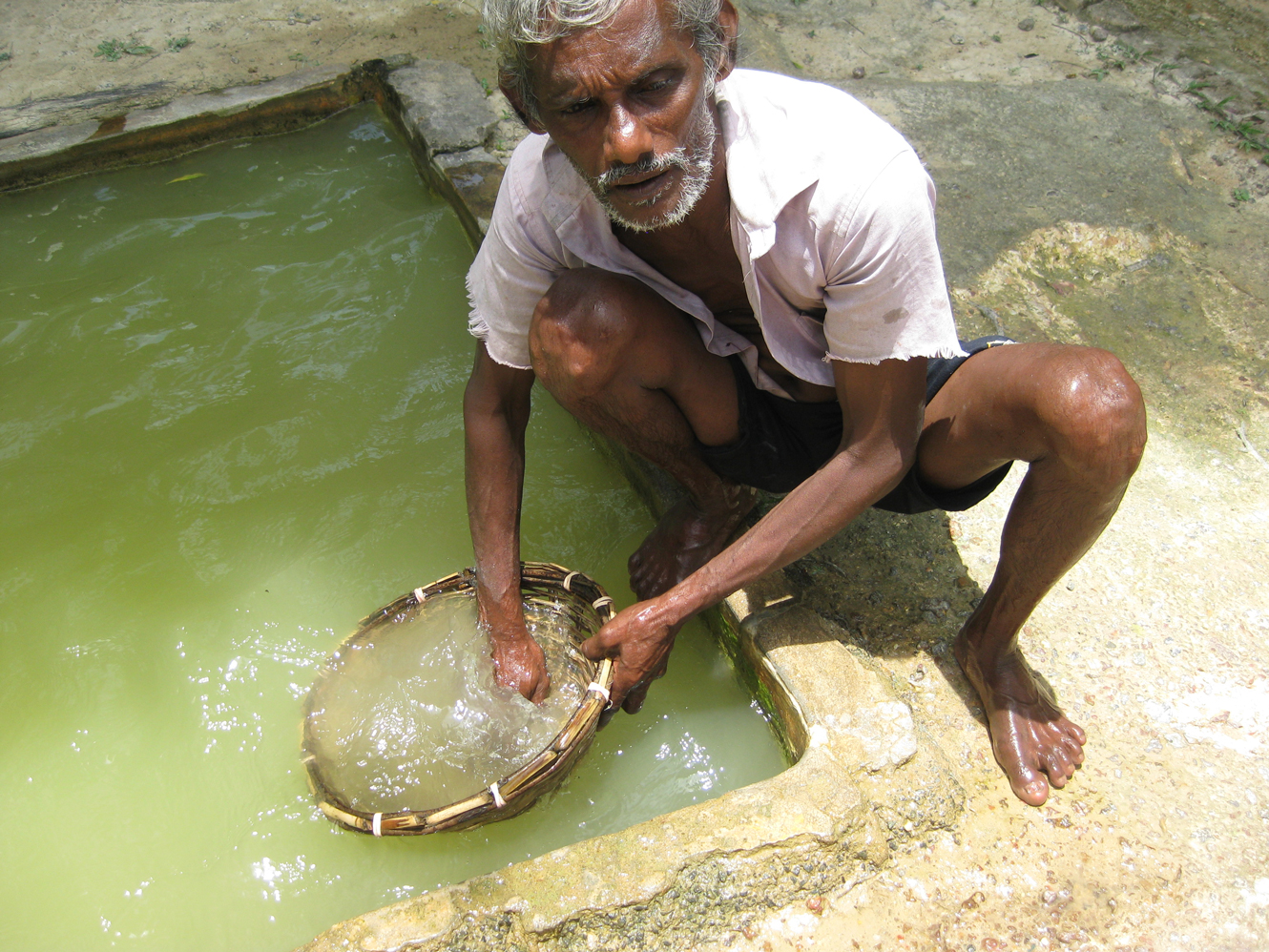
Sieving for Moonstone Gems
We finished the day by walking around the Galle Dutch Fort, which had double walls, with a wide deep drop between them. The Portuguese had built it originally in 1588, and then the Dutch from 1649, which is why there is so much Dutch architecture. The British added the clock tower and lighthouse before independence in 1938.
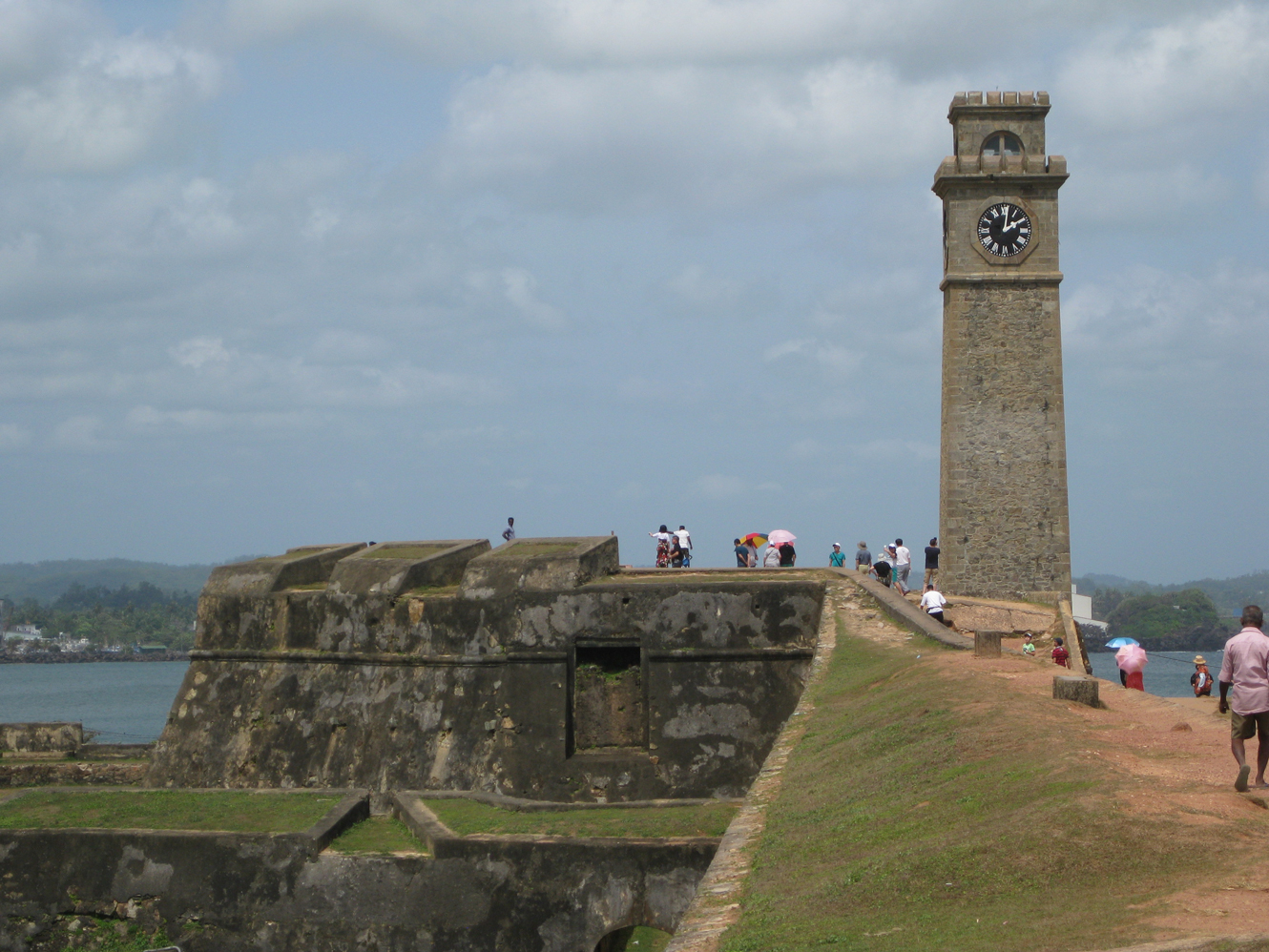
Galle Fort's Clock Tower
Day 13: 29th August 2018:
Rest and relaxation before the flight home. After a walk along the beach we chose to get some exercise by walking into town to look at the shops. As anticipated we were stopped by about half a dozen tuk-tuk drivers, all wanting to taxi us to wherrever we were going; but we were seeking exercise. On our return, Mary swam in the hotel pool and I dozed off on a pool lounger.
Day 14: 30th August 2018:
We made a leisurely start for Columbo airport to catch the 13.05 arriving Heathrow at 20.00
Postscript
Tour Organisation, We used a Sri Lankan company to organise and supply our tour, and we highly recommend anyone wishing to explore Sri Lanka to do the same.
Currency. There are over 200 Sri Lankan Rupees to the Pound Sterling. The optimum back-up currency is the US Dollar. You are recommended to export US Dollars and change them to Sri Lankan Rupees at your port of entry.
Communications. Good mobile phone connectivity was in evidence throughout the island. Its introduction seems to have frozen the spread of landlines to rural areas, which is hardly surprising. We found good WiFi connectivity each evening, often faster than we find at home.
School Uniform. Although technically on holiday in August, that is the month for school exams, so we saw a lot of uniformd school children everywhere in Sri Lanka, all neatly dressed alike. The boys wore white open-necked shirts and full-length white trousers, and the girls wore white skirts and white buttoned up shirts with ties.
Languages. Sinhalese is the native language, peculiar just to Sri Lankans, and the beautiful written script has 14 vowels and 37 consonants. English is the standard second language.
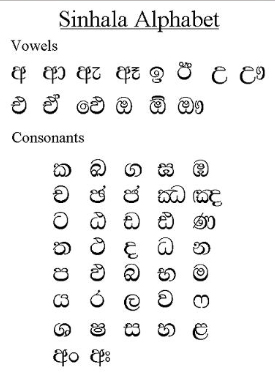
Their alphabet

Writing example
Entrepreneurship: Throughout our time in Sri Lanka, an outstanding feature of the indigenous population was a significantly higher level of obvious entrepreneurship than we have ever found elsewhere in the world. Perhaps having a 'Welfare State' has the effect of destroying entrepreneurship? Everyone with countryside property that included sufficient land grew food crops and set up road-side stalls to sell them; cash only, no paperwork, so no possibility of income tax. Everyone who could afford one had a tuk-tuk, a small three-wheeled vehicle, and used it as a taxi, once again, cash only and no paperwork so no taxation. Tuk-tuks were by far the most common vehicle in Sri Lanka, nearly all individually personalised.
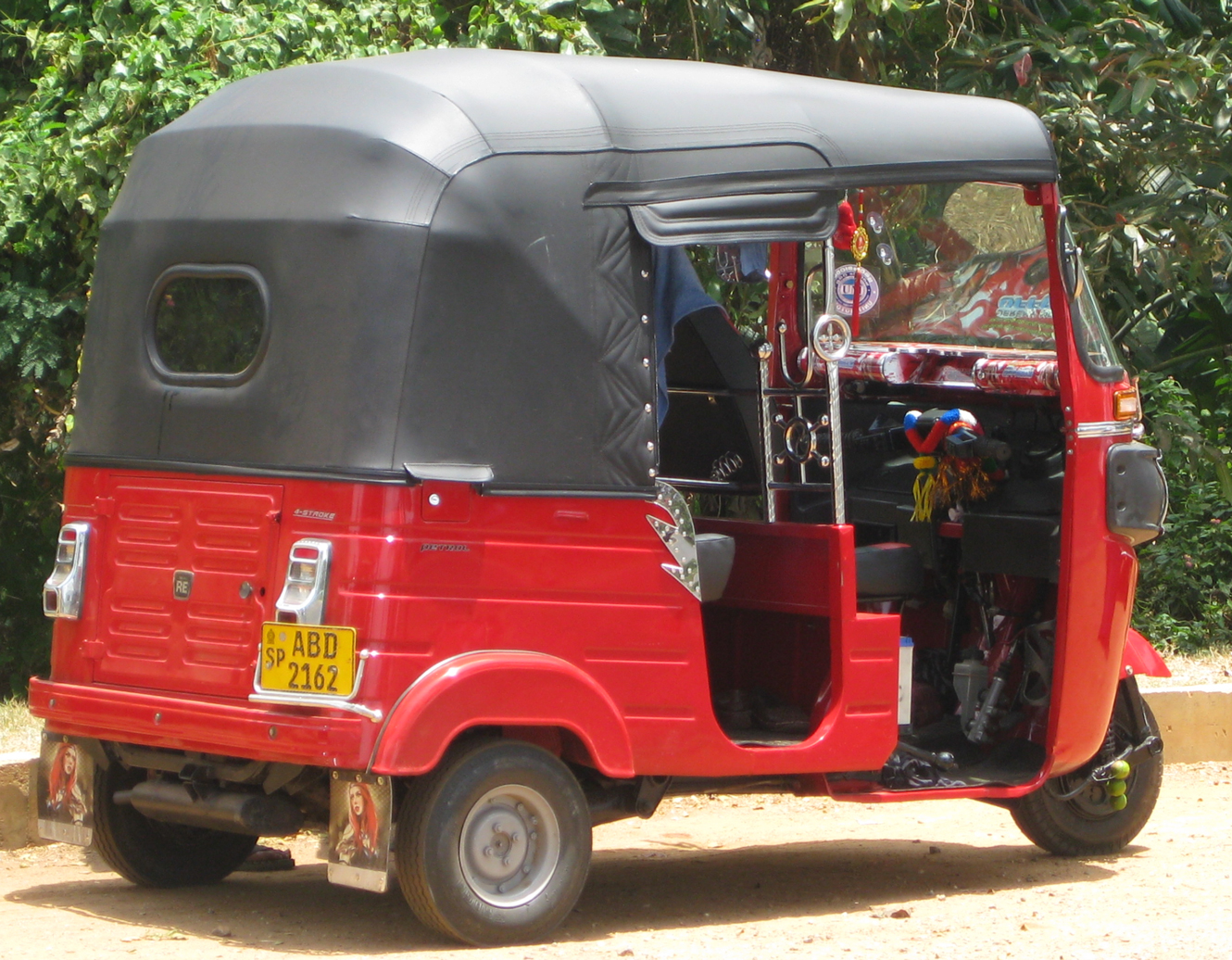
A Tuk-Tuk
Ferro-concrete: The primary constructional material throughout Sri Lanka is very obviously ferro-concrete. Even items that in the UK are made of wood are all prefabricated ferro-concrete, such as the tall posts holding up power cables, farmland fence-posts, and vertical shafts holding up roofs. However, there are very, very, many examples of partly completed ferro-concrete buildings, with ferrous wires pointing sky-wards, the finishing of which has been long abandoned; we saw no evidence anywhere of the tall tower cranes used internationally to pour concrete at high level, and we saw no revolving-cylinder concrete mixers on the road or on building sites, only one newish-looking example for sale in a yard. Prefabricated ferro-concrete corner-post were cemented into the concrete floor, the proposed ceiling was supported by temporary wooden sheets, supported by a vast array of 4-inch diameter bamboo poles, and the ceiling then concreted by hand, floor at a time. Prefabricated ferro-concrete stairways, all identical, were also very much in evidence.
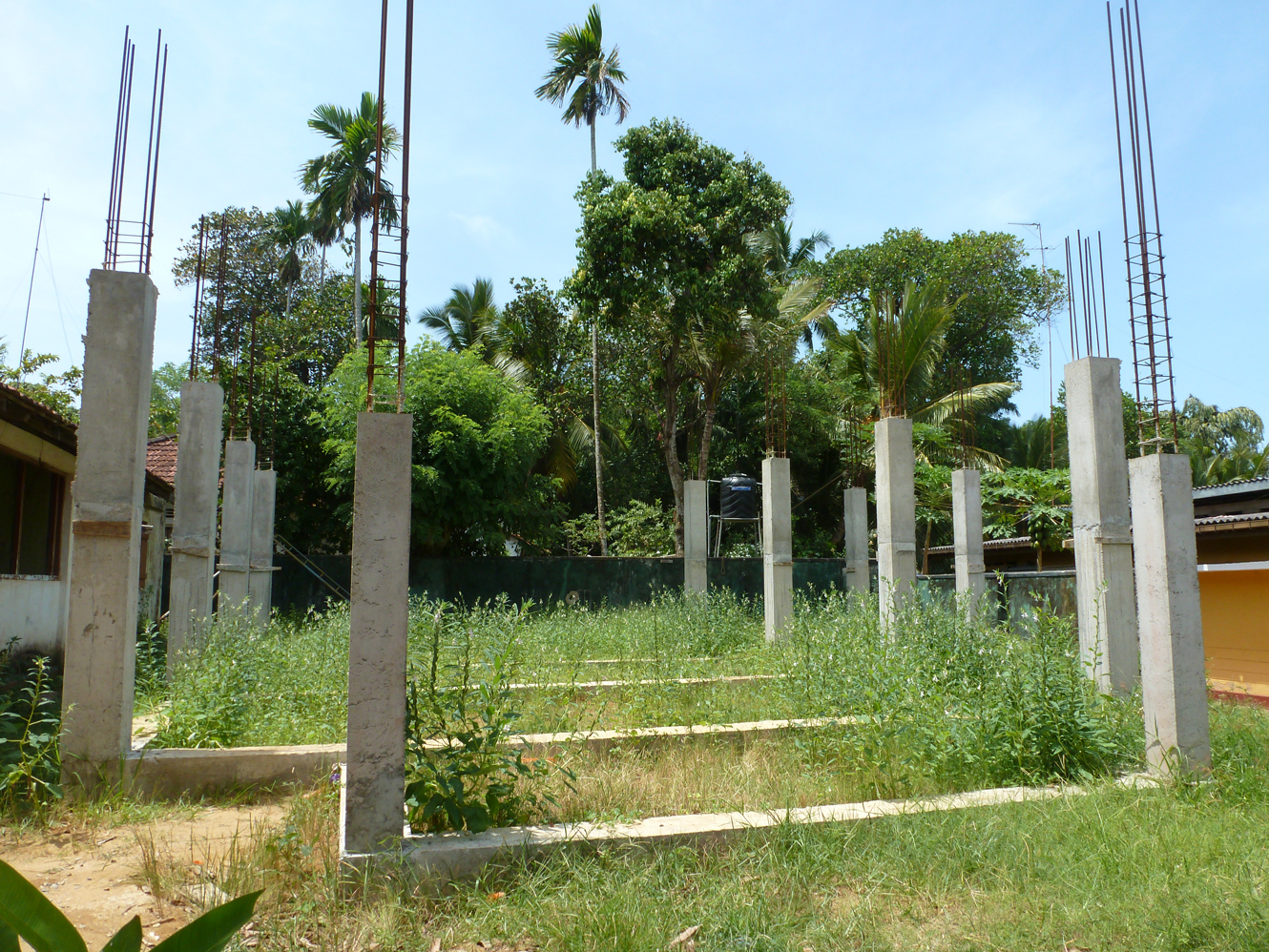
A common sight
Catering: We were on half-board terms throughout our tour, with excellent multi-course buffet breakfasts and evening meals. Each meal included (inter alia) a choice of either meat or vegetable curry with a choice of different rices, even for breakfast. If you like your tea or coffee sweetened without sugar, you must take your own artificial sweetener wherever you go.
Return to the top of this page, or to The First Page or return to the Holidays Index